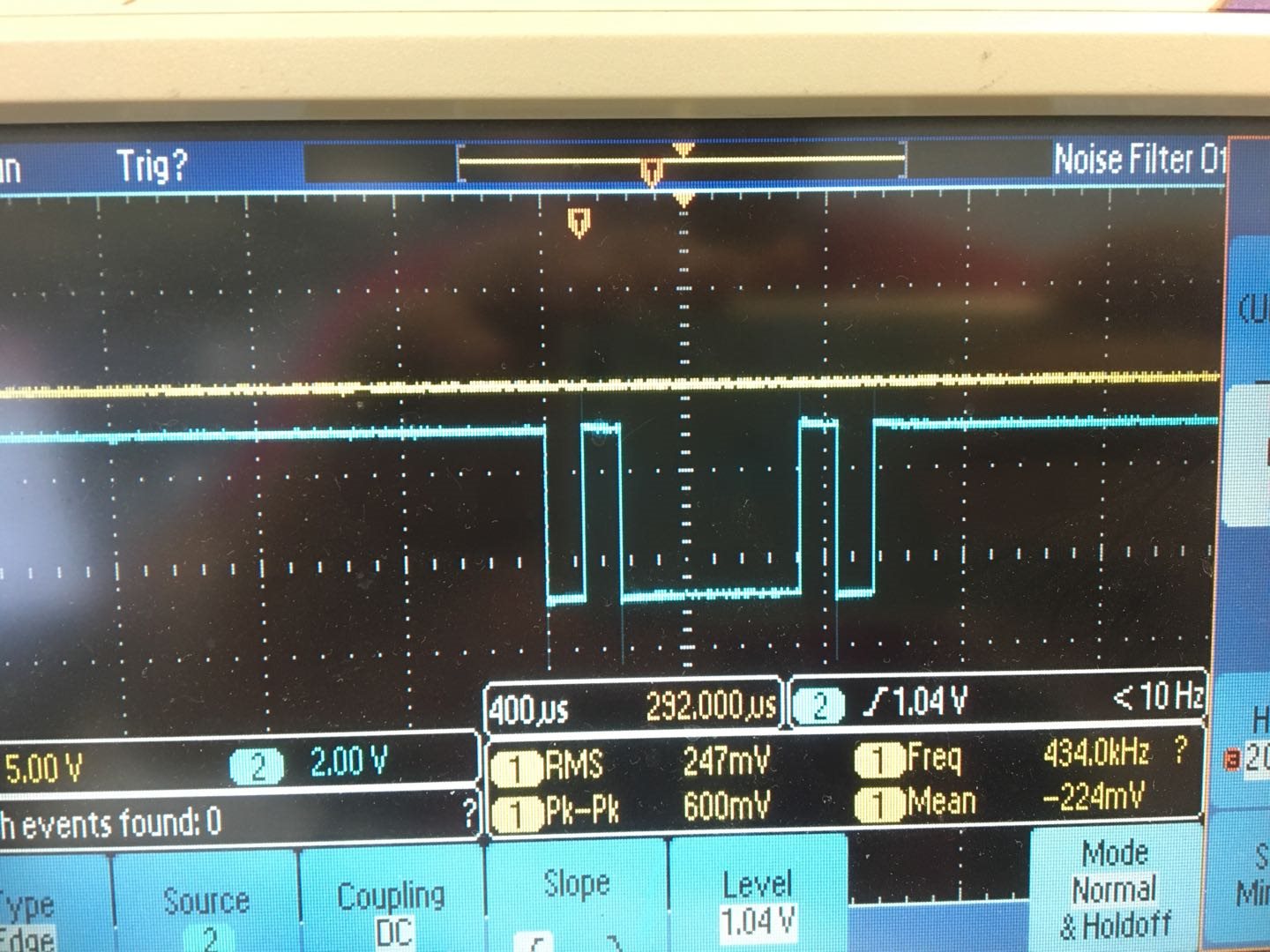Other Parts Discussed in Thread: C2000WARE
Hello
I am trying to down load firmware to TMS320F28379D though UART. The folowing methods are what I have tried but I didnot get a good result so far.
1. set GPIO72 low and GPIO 84 high (boot from SCI mode), connect GPIO28 with Tx of UART and GPIO29 with Rx, and run serial_flash_programmer.exe and get the result as picture 1 and the signal on GPIO28 is shown as picture 2.
2. set GPIO72 and GPIO 84 high( Get Mode), down load firmware F2837xD_sci_flash_kernels_cpu01 to silicon and run serial_flash_programmer.exe the result is the same. the kernels is staying at while(SciaRegs.SCIFFCT.bit.ABD != 1) {} waiting for correctly read an 'A'. I also try to send '0x0A', '0xA0', 0xAA to the silicon by hyperterminal, the kernel still stay at that step.
3. I tried the firmware of sci_echoback_cpu01 and get that the SCI works well.
It seems that the kernel can not get 'A' for autobaud correctly. Could you please give me some advices about it.
picture1
picture2


